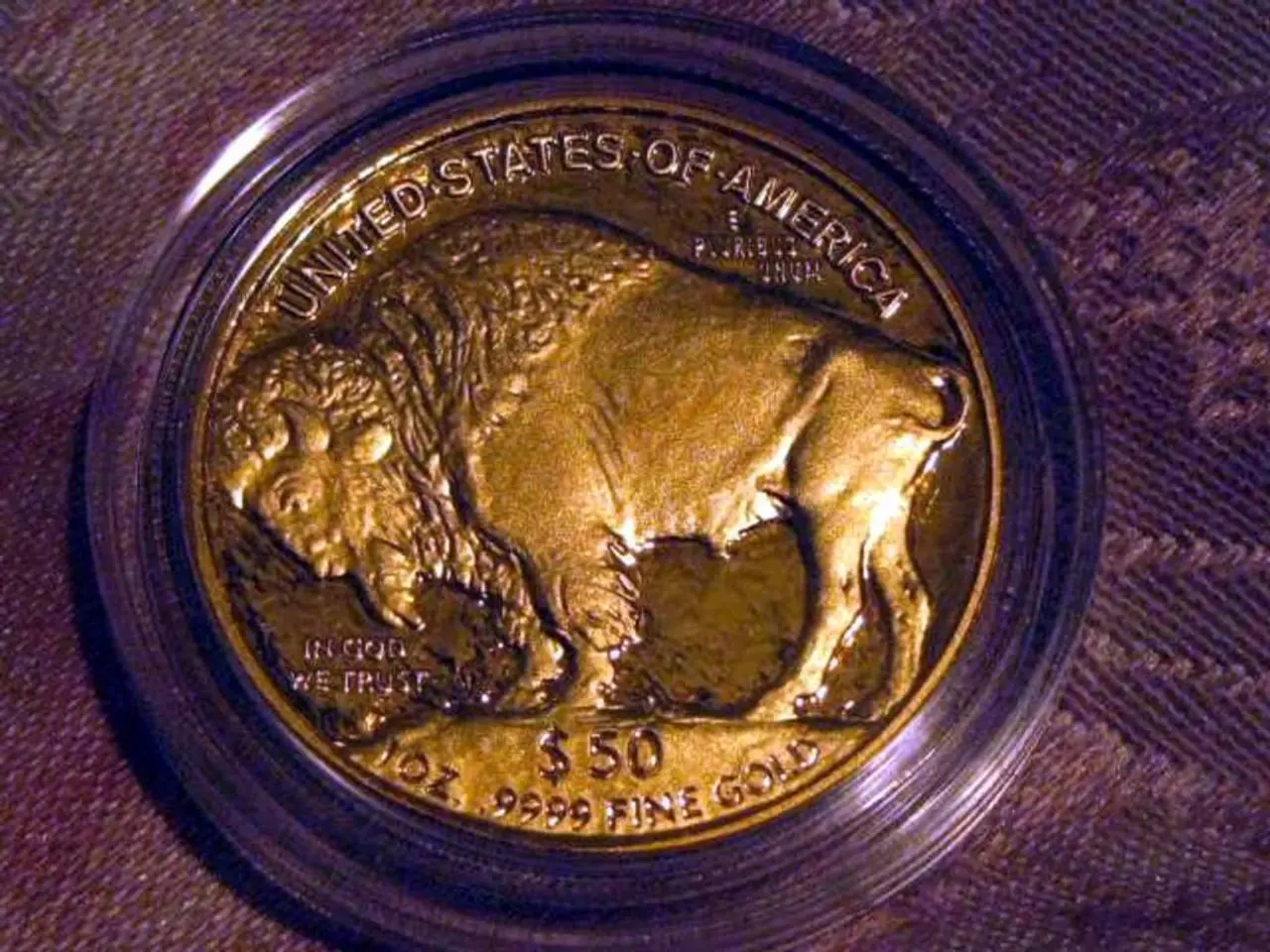Faster-Than-Anticipated U.S. Inflation Deceleration - Implications for Federal Rate Adjustments and Bitcoin Prices
In a significant turn of events, the Federal Reserve (Fed) has signalled a potential series of interest rate cuts in 2025, following a consistent drop in inflation rates and signs of economic moderation. This move marks the first interest rate cut since July 2023, with the federal funds rate currently projected to decrease by a cumulative 0.50 percentage points over the course of 2025.
The decline in inflation, which peaked in 2022 and has been steadily falling since, has been a key driver in the Fed's decision to cut rates. In July 2024, core inflation dropped from 3.3% to 3.2%, and overall inflation fell from 3% to 2.9%. This trend continued into February 2023, with both the U.S. core and overall inflation rates decreasing.
Historically, the Fed has been known to cut interest rates following consistent drops in inflation and signs of economic slowing. For instance, after aggressively hiking rates in 2022-2023 to combat inflation (peaking Fed funds rate at 5.25-5.50%), the Fed began cutting rates in late 2024 as inflation declined and economic conditions moderated, dropping the federal funds rate to 4.25-4.50% by early 2025.
Looking ahead to 2025 and beyond, analysts expect more Fed rate cuts for continued economic support. Morningstar projects the Fed will cut rates by a cumulative 0.50 percentage points in 2025 (two cuts), further cuts in 2026 (0.75 points) and 2027 (0.75 points), leading to a federal funds rate around 2.25%-2.50% by end of 2027.
The recent drop in U.S. inflation has sparked discussions of potential Fed rate cuts, which could have a significant impact on the Bitcoin market. Lower interest rates reduce the opportunity cost of holding non-yielding assets like Bitcoin and often increase liquidity in financial markets, which historically can drive increased demand and upward price pressure on Bitcoin. Past periods of Fed easing and low rates, such as post-2020, have coincided with strong rallies in Bitcoin as cheaper borrowing and increased risk appetite encourage investment in alternative assets.
However, it's important to note that Bitcoin prices are also driven by other factors including regulatory developments, macroeconomic uncertainty, and adoption trends. Thus, while Fed policy is a key influence, it is not the sole determinant of Bitcoin's price movements.
In the Bitcoin market, recent volatility has been evident, with a 15.3% drop over the past month and a 9.3% dip in the last week. Yesterday, Bitcoin briefly climbed from $82,914.61 to $83,660.58 before settling at $83,165.61.
In conclusion, based on historical Fed behavior and current projections, rate cuts in 2025 following consistent inflation declines are likely, with potential positive implications for the Bitcoin market due to increased liquidity and lower borrowing costs. However, it's crucial to remember that Bitcoin's price movements are influenced by a variety of factors, and the Fed's monetary policy is just one of them.
- The potential series of interest rate cuts in 2025 by the Federal Reserve (Fed) could have a significant impact on the Bitcoin market, as lower interest rates reduce the opportunity cost of holding non-yielding assets like Bitcoin and often increase liquidity in financial markets.
- Analysts expect more Fed rate cuts for continued economic support, and according to Morningstar, the Fed could cut rates by a cumulative 0.50 percentage points in 2025 and possibly more in subsequent years. These cuts might lead to a lower federal funds rate, creating a favorable environment for Bitcoin investing.
- Options for investors in this context include considering Bitcoin as an alternative asset with potential for appreciation due to factors such as increased liquidity and lower borrowing costs that may be caused by Fed rate cuts. However, investors should remember that Bitcoin's price movements are influenced by a variety of factors other than just the Fed's monetary policy.




